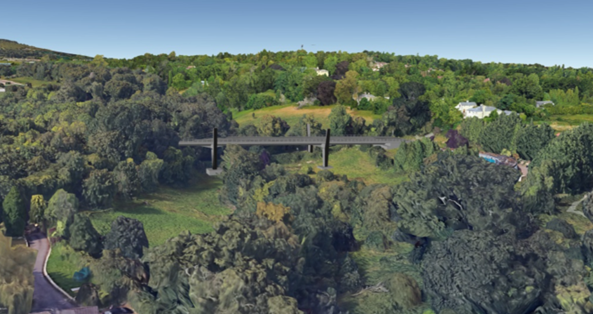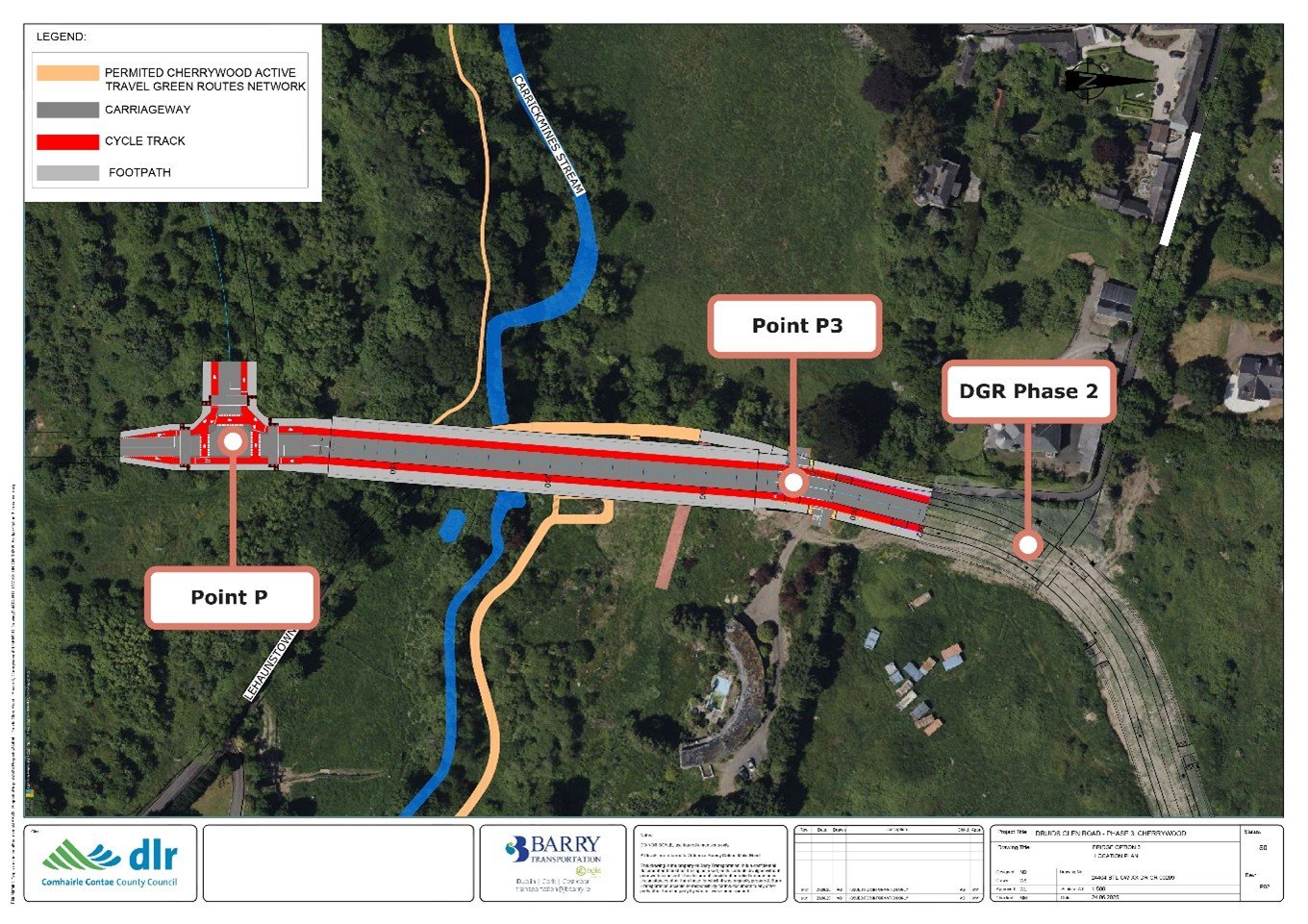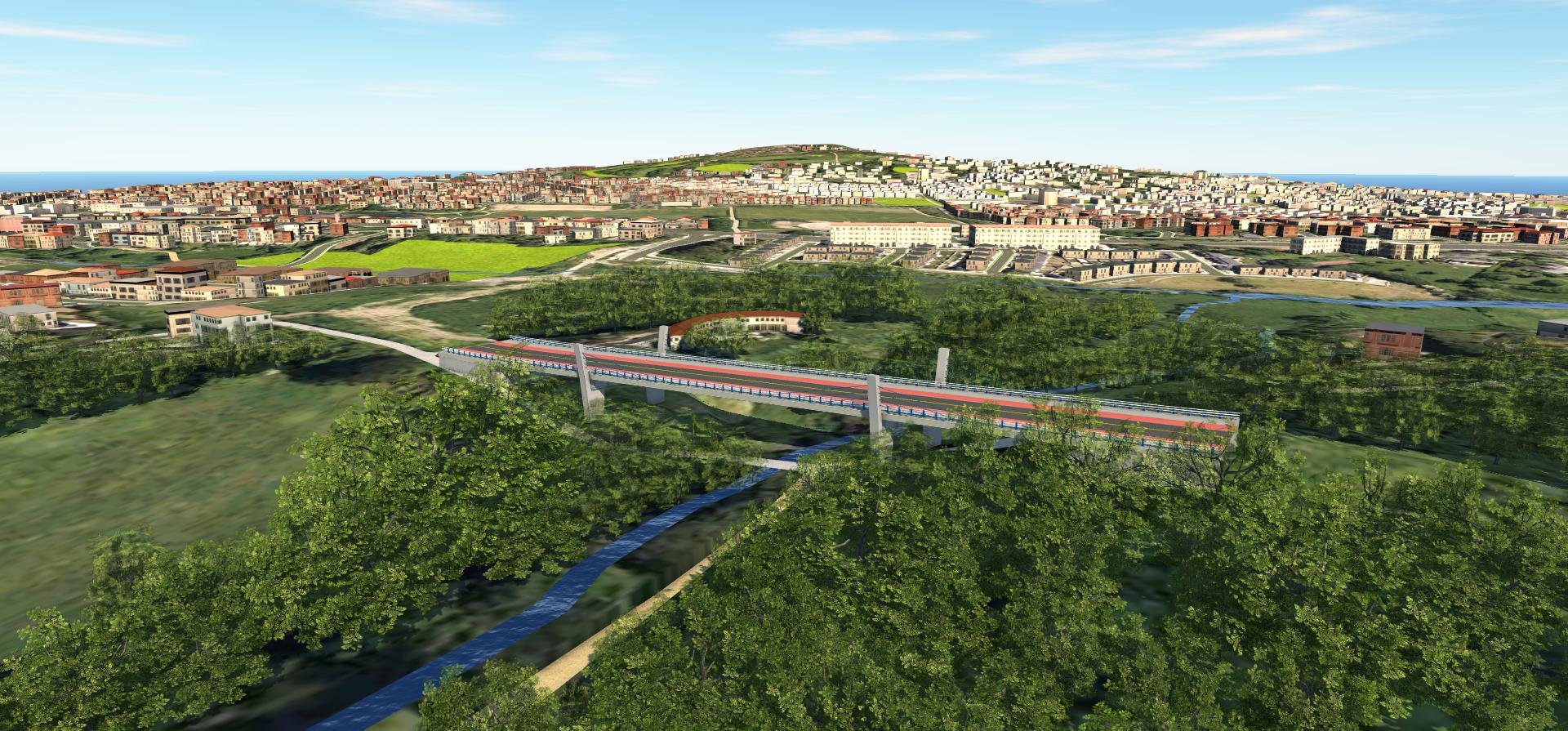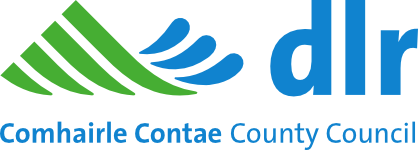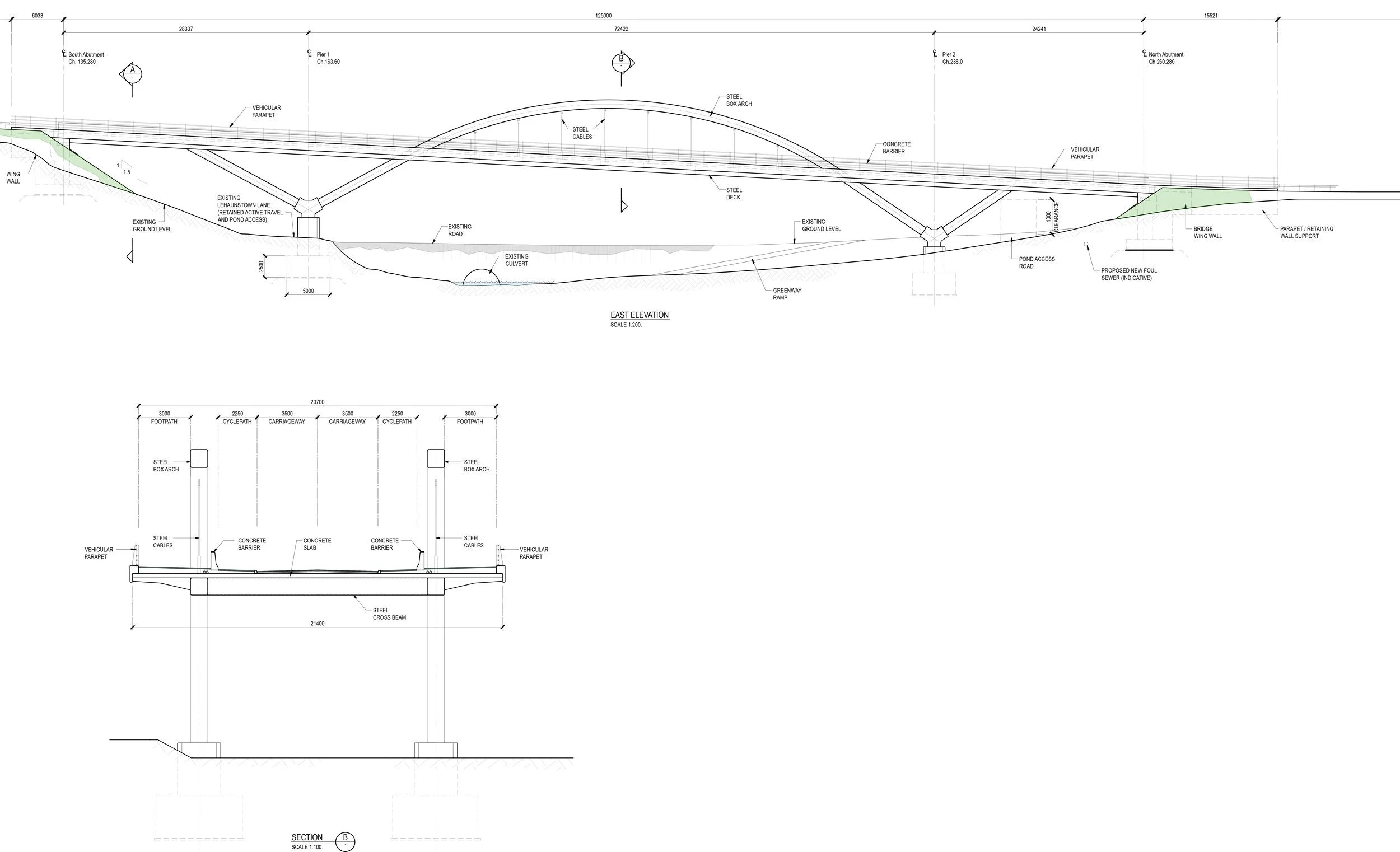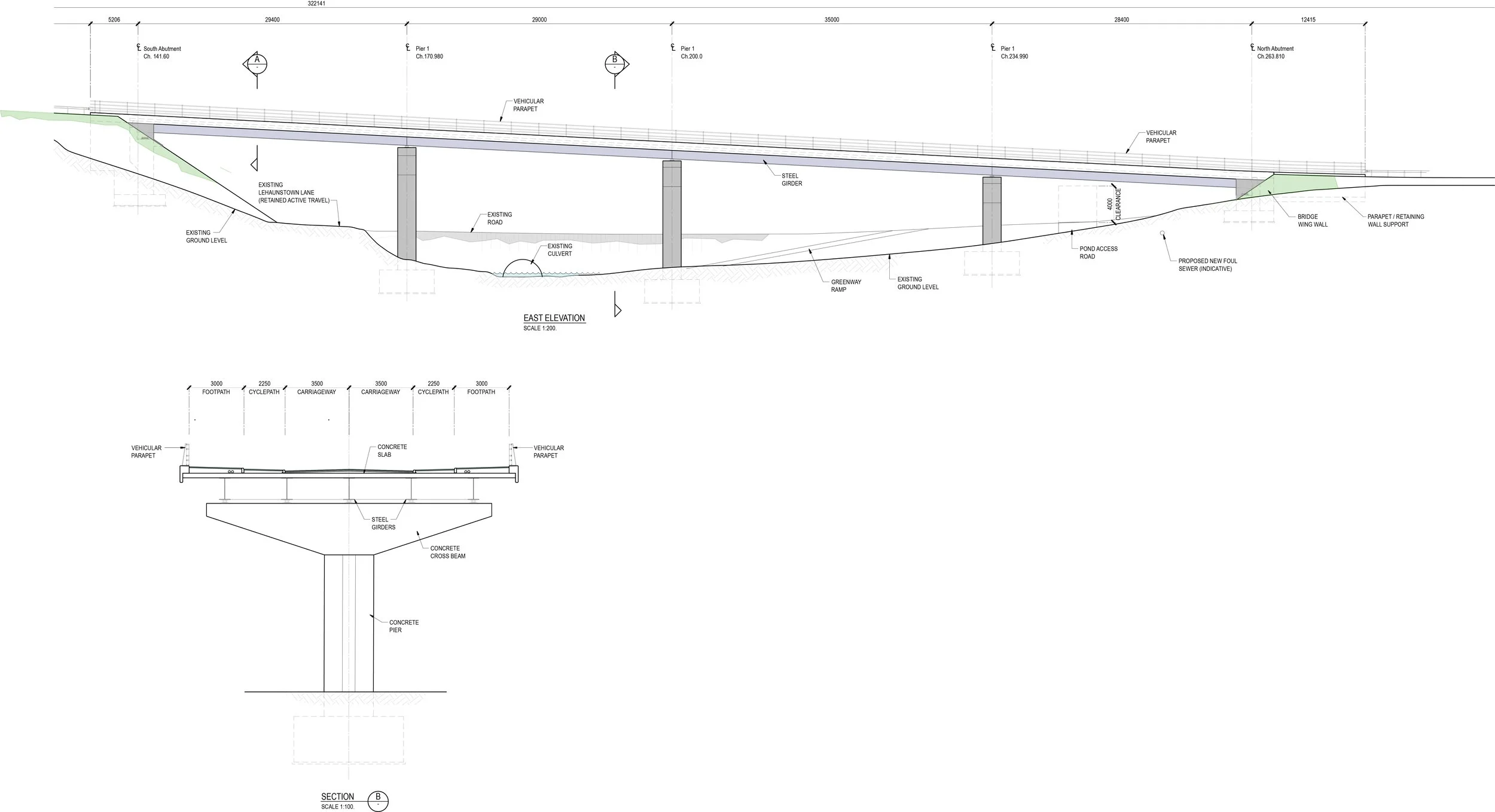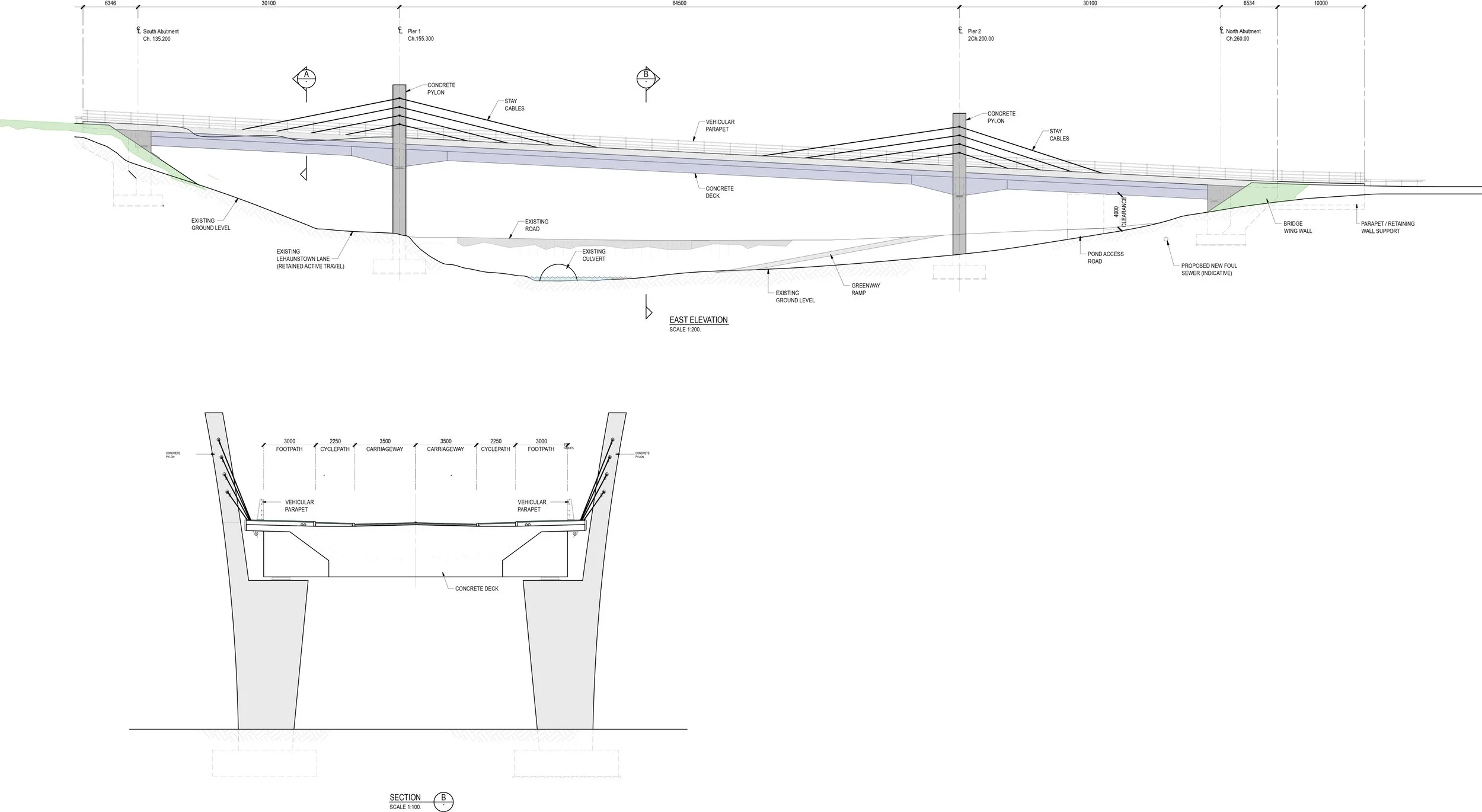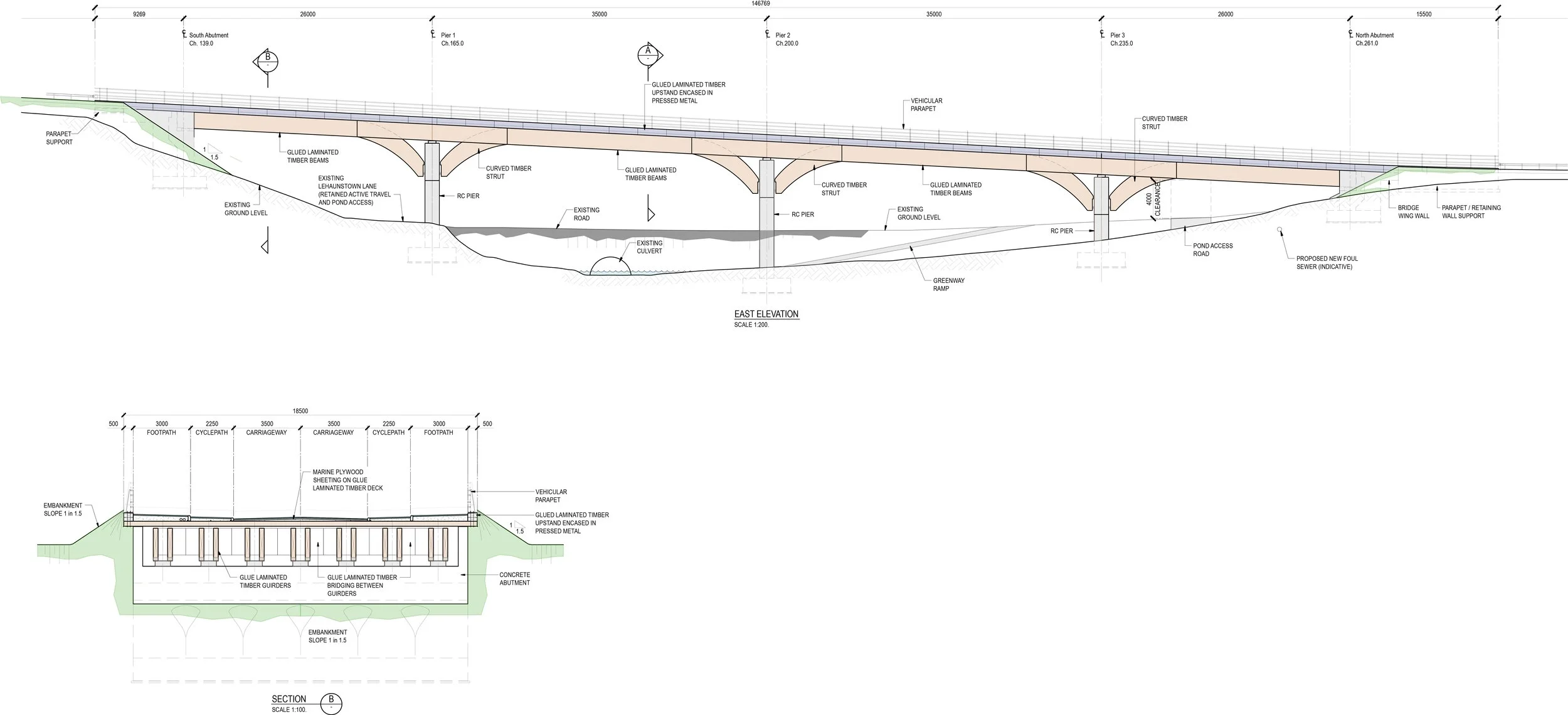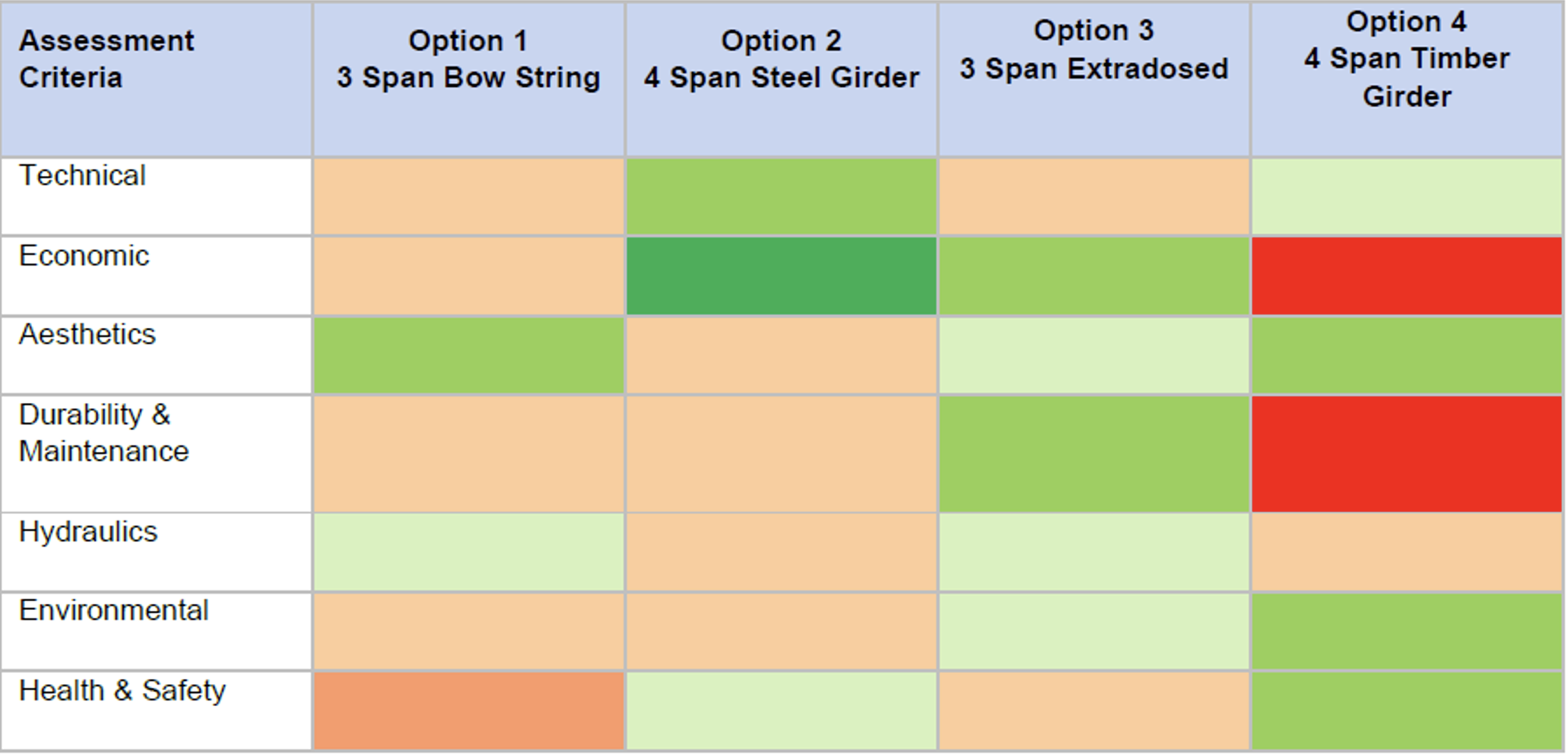Vertical Alignment Options
A key component of identifying an Emerging Preferred Concept for Druid’s Glen Road Phase 3 was to assess different Vertical Alignment Options before exploring Bridge Concept Design Options.
Noting that the horizontal alignment and indicative cross section for the bridge crossing is prescribed under the Cherrywood Planning Scheme (2014, as amended), this was necessary given the differing heights between the north and south side of Druid’s Glen, the area’s geology, the need to comply with technical requirements regarding gradients and the need to consider the impact on zoned lands regarding issues such as access and road frontage.
The selection of a Vertical Alignment comprised the following Two Step Process:
Step 1: Assessment against Project Objectives
To guide decision-making on the Vertical Alignment, a series of project-specific ‘Objectives’ were created in accordance with the Department of Transport’s Transport Appraisal Framework (TAF).
Step 2: Multi-Criteria Analysis (MCA) of Vertical Alignment Options
All five vertical alignment options were brought forward from Step 1 to undergo a Step 2 Multi-Criteria Analysis (MCA). To help identify the optimal Vertical Alignment, Options were assessed against a range of issues/criteria that included the following: appropriate gradient; impact on zoned lands; impact on geology; buildability; accessibility; impact on Human Beings; Ecology including woodland, the Environment; Visual Impact; Cost; and Consistency with the Cherrywood Planning Scheme.
The Alignment Options Assessment Report (Barry Transportation/Egis, 2024) outlines the results of this analysis and presents the Selected Vertical Alignment Option together with a series of concept plans, long sections and cross sections for all options that were used to help inform the decision-making process.
Bridge Concept Design Options
Once a Vertical Alignment Option was selected, four different Bridge Concept Design Options were developed for consideration and assessment for the purpose of identifying an Emerging Preferred Concept. Similar to the Alignment Options Assessment, this followed the below key steps:
Step 1: Assessment against Project Objectives
The Project Objectives that were used under Step 1 of Alignment Options Assessment and sourced from the Department of Transport’s Transport Appraisal Framework (TAF) were again utilised to sense check all four bridge design concepts before progressing to a more technical multi criteria assessment.
Step 2: Multi-Criteria Analysis (MCA) of Vertical Alignment Options
All four Bridge Design Concept Options were brought forward from Step 1 to undergo a Step 2 Multi-Criteria Analysis (MCA). To help identify an Emerging Preferred Bridge Design Concept, options were assessed against a range of issues/criteria that included the following: impacts regarding Visual Impact, Climate Change, Biodiversity including Woodland, Ground Water, Water Courses, Flood Risk, Costs, Maintenance, Buildability and Health and Safety. All options were also assessed against the relevant objectives contained in the Cherrywood Planning Scheme (2014, as amended).
The Final Options Appraisal Report (Barry Transportation/Egis, 2025) outlines the results of this analysis and presents the Emerging Preferred Bridge Design Concept together with a series of concept plans, elevations and cross-sections for all options that were used to help inform the decision-making process.
Bridge Concept Design Options
Option 1.
The bridge options explored involve either three or four-span designs. In bridge engineering terms, a "span" refers to the section between supports normally in the form of vertical piers.
Phase 3 – Bridge Options Concept Designs – Elevations & Cross-Sections:
A three-span, low-rise bowstring arch structure.
Option 2.
A four-span girder bridge constructed of steel girders and concrete slab
Option 3.
A three-span “extradosed bridge”, which comprises a hybrid bridge type bridge combining concrete girders and a cable stayed design with low pylons.
Option 4.
Utilises cross-laminated timber (CLT) girders and a timber deck in a four-span arrangement, similar to Option 2.
Landscape and Visual Impact
As an outcome of the MCA, the valley setting of the Brennanstown Dolmen (National Monument) was determined to be largely unaffected by all four of the Bridge Design Concept Options. Existing vegetation around the Dolmen is considered to provide sufficient screening of the Bridge Site located approx. 0.5 kilometres to the east of the Dolmen.
The Emerging Preferred Design Concept for the Bridge would also be located outside the field of a Protected View associated with Glendruid House (Protected Structure).
Furthermore, a full Tree Impact Assessment will be carried out at the next stage of the project and will inform a more detailed planning application proposal. It is envisaged that any loss of existing trees and vegetation from the Druid’s Glen will be addressed and mitigated at that stage of the project.
Emerging Preferred Design: Option 3
Option 3 (Three-span extradosed) was identified as the Emerging Preferred Bridge Design Concept following the Step 2 MCA of Options. How each of the Bridge Design Concept Options performed under the MCA is visualised in the below Table. In terms of the colour scale that was utilised: red means major or highly negative impact compared to other options, peach means minor or slightly negative, and dark green means a highly positive impact compared with other options (Full details can be found in the Final Options Appraisal Report).
Multi-Criteria Assessment (MCA) Bridge Concept Design Options
Elevation of emerging preferred design
